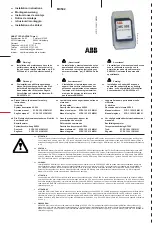
A REFERENCE GUIDE FOR OPTIMIZING DELL™ MD1000 SAS SOLUTIONS
VER A00
PAGE 27
5/06/2005
RAID 10
RAID 10 has good I/O performance, excellent availability and redundancy. The biggest drawback
of RAID 10 is that it requires twice the number of physical disks needed for data. This RAID
configuration should be used in situations requiring maximum availability, redundancy, and
performance.
RAID 5
RAID 5 has good I/O performance, data protection and requires only one additional physical disk
than the number needed for data. RAID 5 should be used in situations where maximum storage
capacity is required along with a moderate amount of data protection.
RAID 50
A balance between RAID 5 and RAID 10, this solution offers good I/O performance, availability and
good storage capacity. This configuration offers slightly higher performance than RAID 5, but
requires multiple additional physical disks than the number needed for data. It does however
provide greater storage capacity than a RAID 10 solution with a decrease in performance and data
protection. This should be used in situations where greater redundancy and data protection is
required as well as a reasonable storage capacity.
Concatenated
This solution is not recommended due to lack of data protection and redundancy and no
performance gain.
Note:
For more details on RAID configurations see the Dell ‘
Getting Started with RAID
’ document
(http://support.dell.com/support/edocs/storage/RAID/RAIDbk0.pdf)
Application specific guidelines
E-Mail Servers
The storage requirements for e-mail servers can vary depending on the size, the amount, and the
type of users. While small departmental e-mail servers may work well with a small amount of
storage and limited features; large corporate e-mail servers normally require greater storage
capacity, very high availability, performance, and scalability. I/O profiles will vary depending on the
number of users and type of mail and attachments sent.
Table 6: Email Server General I/O profile
I/O Profile
(Read/Write)
I/O Profile
(Sequential/Random)
Bandwidth
I/O
Size
Latency
Sensitivity
Growth
Rate
Criticality
60/40
Random
Heavy
4k
High
High
High









































